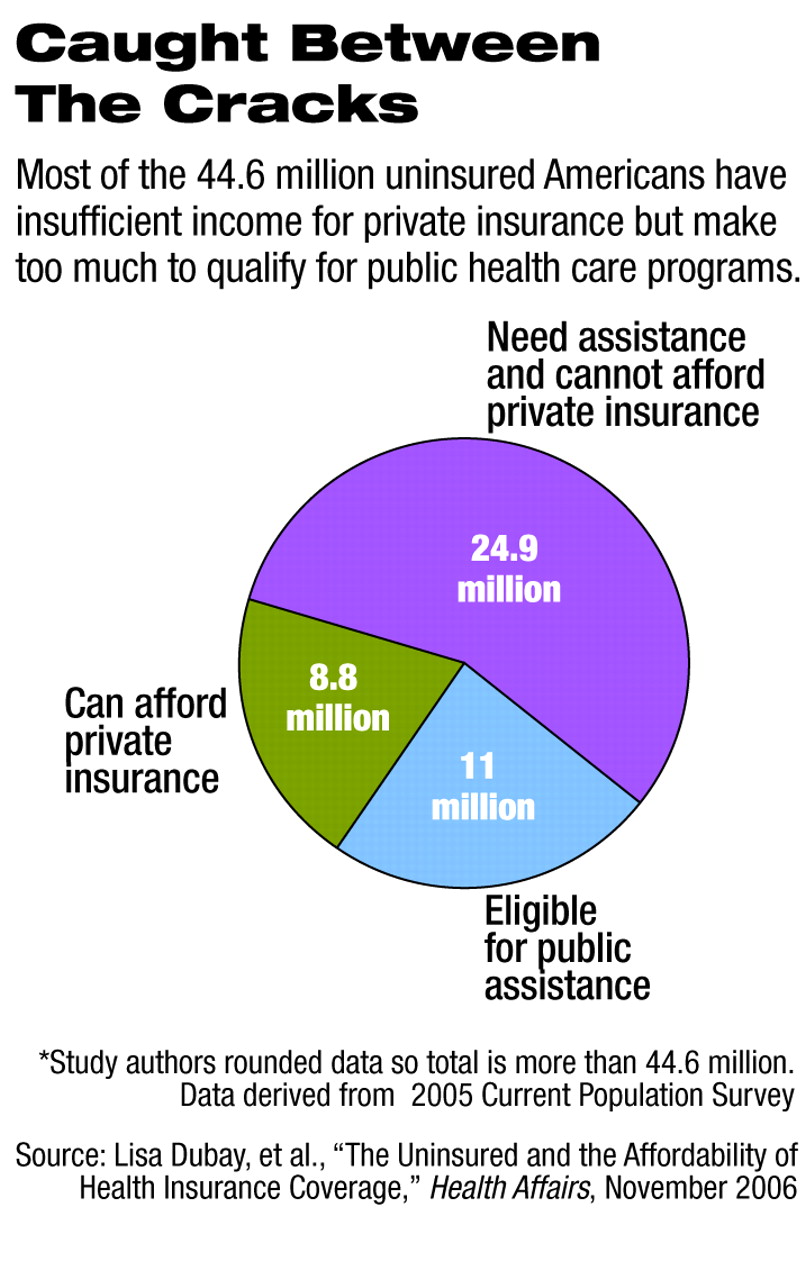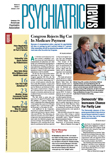Childless adults are the largest group of uninsured Americans who cannot afford health insurance coverage but do not qualify for public programs, according to a new study identifying the uninsured and why they don't have coverage.
The research found that most uninsured Americans are ineligible for public health programs but lack the resources to purchase private coverage.
The study found that among the 44.6 million uninsured Americans, about 56 percent are ineligible for public programs and have insufficient incomes to afford coverage on their own. Another 25 percent of the uninsured are eligible for public programs, while the remaining 20 percent have incomes high enough to afford coverage.
The research was conducted by the Urban institute and published in the December Health Affairs. It was funded by the Robert Wood Johnson Foundation.
Lead author Lisa Dubay, Ph.D., now a research scientist at the Johns Hopkins Bloomberg School of Public Health, said the study counters the belief of some critics of public-assistance programs that all but a small minority of the uninsured could either purchase coverage or are already eligible for assistance.
“But our study shows that the affordability problem is far more serious than that,” she said in a written statement.
Childless adults, who are generally ineligible for Medicaid, the State Children's Health Insurance Program (SCHIP), and other public programs, have the most severe affordability barriers. Although some adults, mostly parents, are eligible for SCHIP, nearly 70 percent of the 25.5 million uninsured childless adults in the United States are ineligible for public programs but cannot afford coverage.
Among the 11.1 million uninsured parents, about 56.9 percent cannot afford coverage and have no access to public assistance, according to the study.
The smallest group of uninsured is children. The study found that only 11.3 percent of the country's 8 million uninsured children are in families that cannot afford private coverage and have no public options available. The authors credited the relatively small number of uninsured children to the establishment of SCHIP and other coverage expansions for children.
The study findings help highlight the affordability problems that underlie the lack of insurance, said Tanya Anderson, M.D., vice chair of APA's Council on Social Issues and Public Psychiatry. The huge and increasing numbers of uninsured end up costing society much more in health care costs because they put off seeking care until their health degenerates to the point that it becomes a health crisis. At that point, they get treatment in the most expensive way possible: through emergency rooms that the public funds, she noted.
“It adds to the argument that all of the quibbling over whether these people can afford their own insurance and are choosing not to get it is not relevant,” Anderson said.
Also identified by the study was the large number of adults and children who are eligible for Medicaid and SCHIP but do not participate. The study found that 11 million of the 64.2 million Americans eligible for public health programs do not participate.
Mental health advocates unconnected to the study have suggested that this group could include many people with serious and persistent mental illness, because they often have difficulty meeting administrative requirements to qualify for the assistance.
“The biggest issue for persons with mental illness is the administrative burden to access these benefits, which is present even if [the government] expands access to public health programs overall,” Anderson said about the burden of understanding complicated requirements and forms.
Other obstacles to obtaining coverage include limited outreach efforts to people who qualify for the programs, patients' lack of knowledge about eligibility for public health insurance coverage, or the failure of families to undertake the efforts necessary to obtain coverage, according to the study authors.
Mental health care clinicians have growing concerns about the increasing administrative burdens on Medicaid participants, such as the recently added requirement to provide proof of citizenship, Anderson said.
The additional eligibility requirements have a unique impact on mentally ill beneficiaries, who may have fears about “government scrutiny” and employer discovery of a mental illness, she added.
The best way to reduce the number of uninsured people who are eligible for public programs, the study authors said, is to conduct extensive outreach and simplify enrollment and eligibility redetermination procedures, including relaxation of requirements for documentation of income, assets, and citizenship.
The group of uninsured who seemed best positioned to receive health care—those for whom insurance is described as“ affordable”—may actually lack insurance because of chronic health conditions, according to the researchers. The study found that this group represented 20 percent of the uninsured, but they cautioned that this group's poor health may render them ineligible for coverage or make it unaffordable.
Assistance for this group might take the form of a Massachusetts-style government mandate that would require that they either purchase it or have it provided through a government-sponsored program. Such an approach would prevent this group from falling through the cracks of the system or receiving charity care when their illness reached the catastrophic stage.

